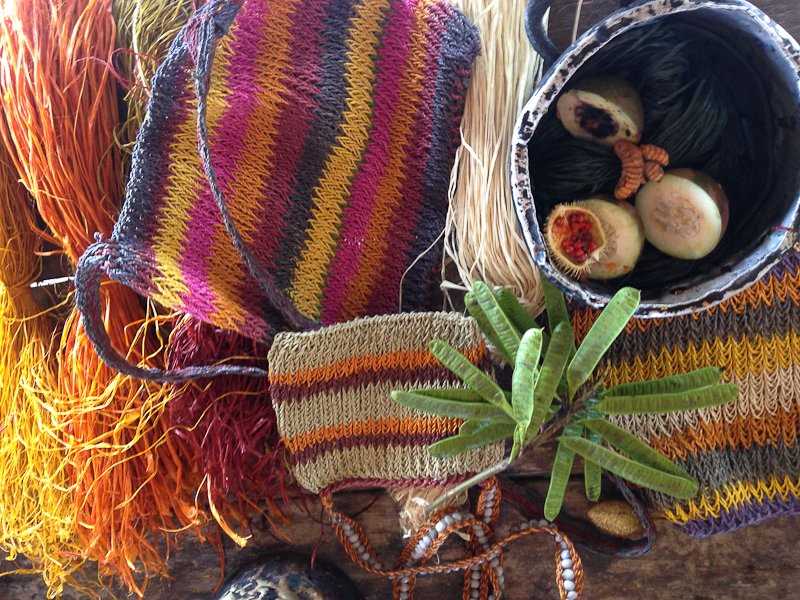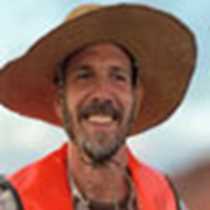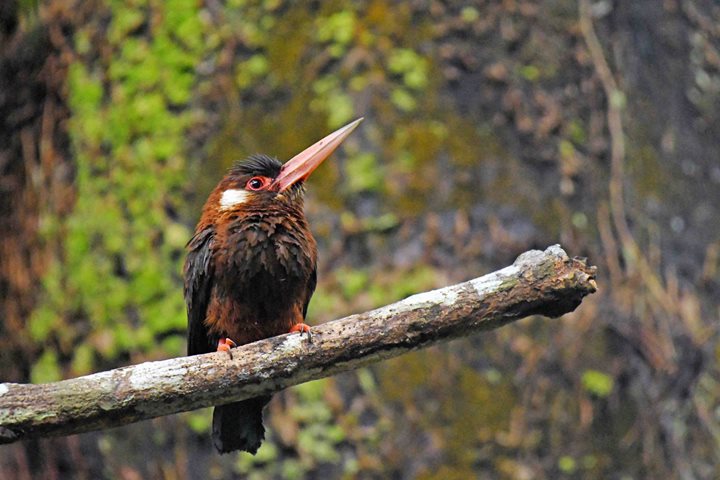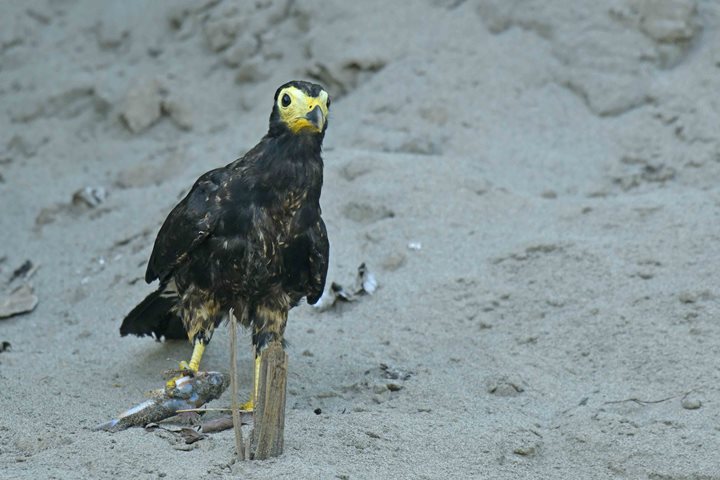Delfin II spent the night tied up alongside the Marañón River, just in front of Amazonas Village.
After breakfast we disembarked at the community known as Amazonas. Here we had our best cultural experience so far. We walked around the village to get to know some more things about life on the shorelines of Amazonia. Because of its proximity to the town of Nauta, Amazonas enjoys better connection with the outer world, and therefore they have better economical possibilities. One way, in which we can tell that there are more resources than in more remote communities, is the presence of well-built schools, with different degrees of education for children. We visited the school, and interacted with the enthusiastic kids by singing songs and exchanging smiles. We also learned about the traditional way in which handcrafts are made with local materials from the jungle.
One of the most important materials for making baskets, skirts, handbags, placemats and an infinity of other crafts is a palm called chambira. The fibers are obtained from the new leaves emerging from the top of the spiny palm. With a long stick and a machete on the end, the leaves can be harvested without doing much damage to the palm. After harvesting them, they are boiled and dried under the shade, mixed with different plants and mordents to give them bright natural colors.
Delfin II repositioned to Clavero Lake. Leaving the Marañón River behind to enter the Ucayali. At around noon we sailed through the official place where the Amazon River gets its name. As we sail farther up into the Ucayali River, wildlife and landscapes seem to be slightly more wild and remote.
Clavero Lake is where we went for a swim before heading out for skiff explorations. Under nice weather and nice light, we saw several great black hawks, mealy amazon parrots, river dolphins and pigmy marmosets.







